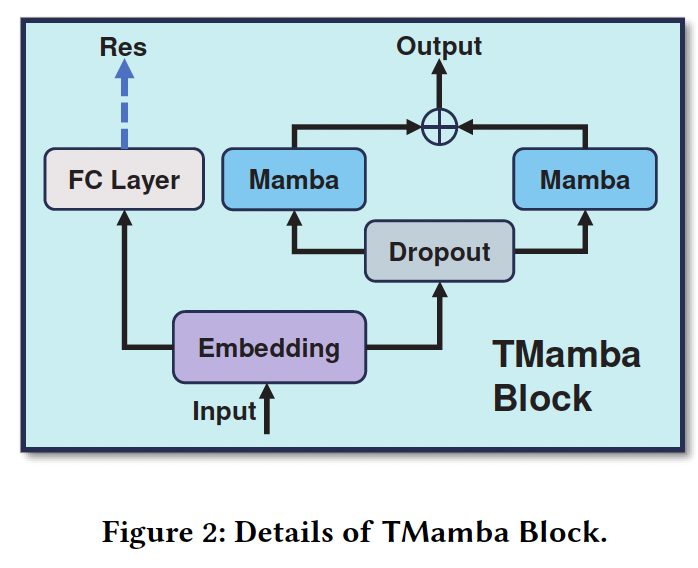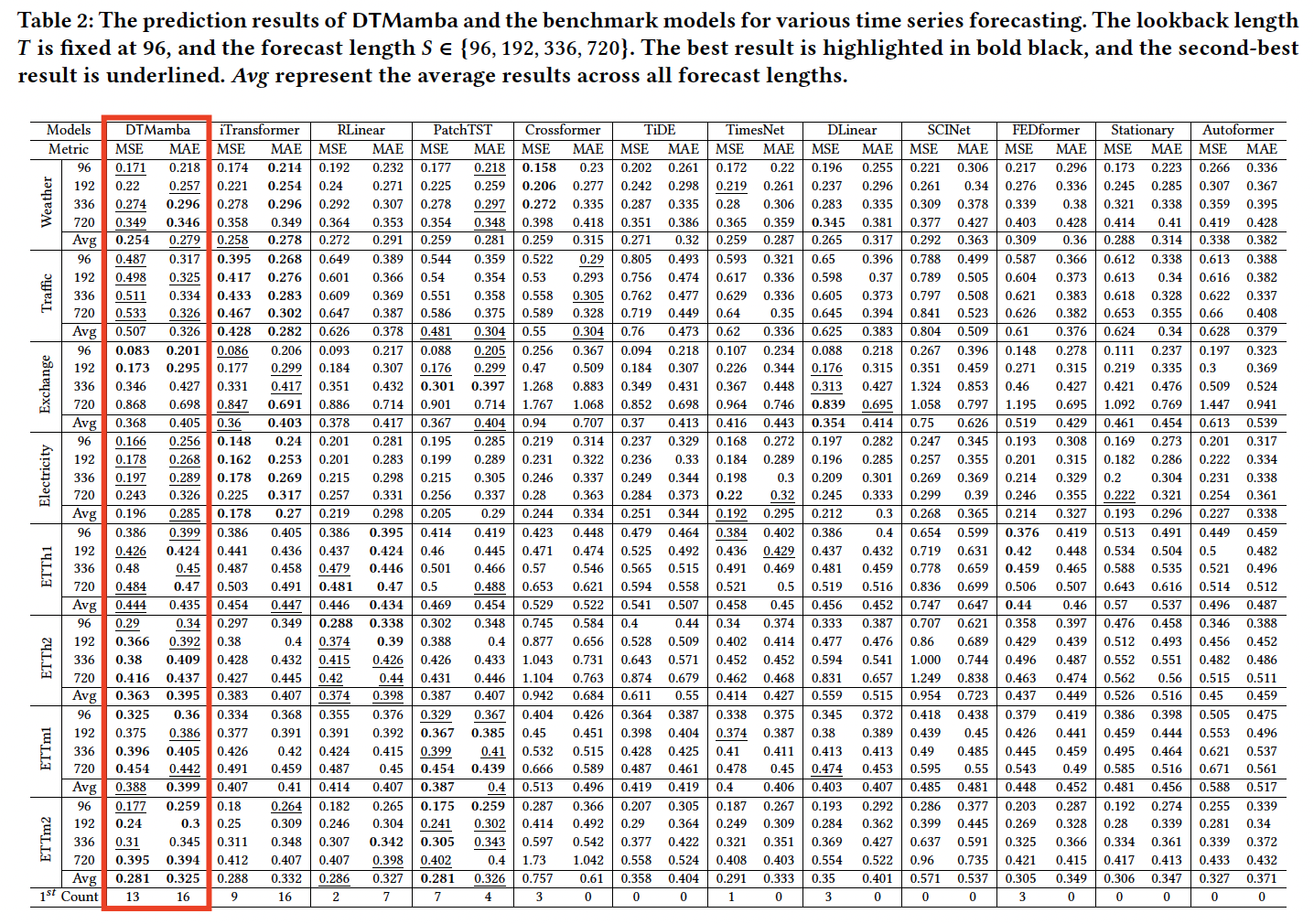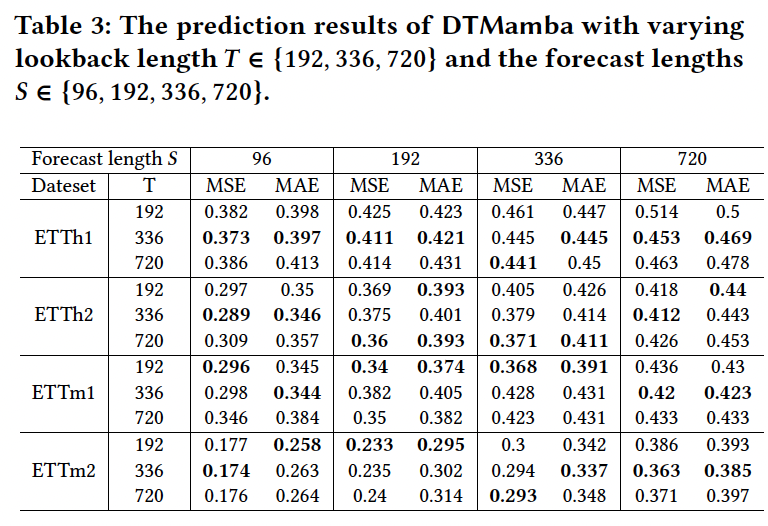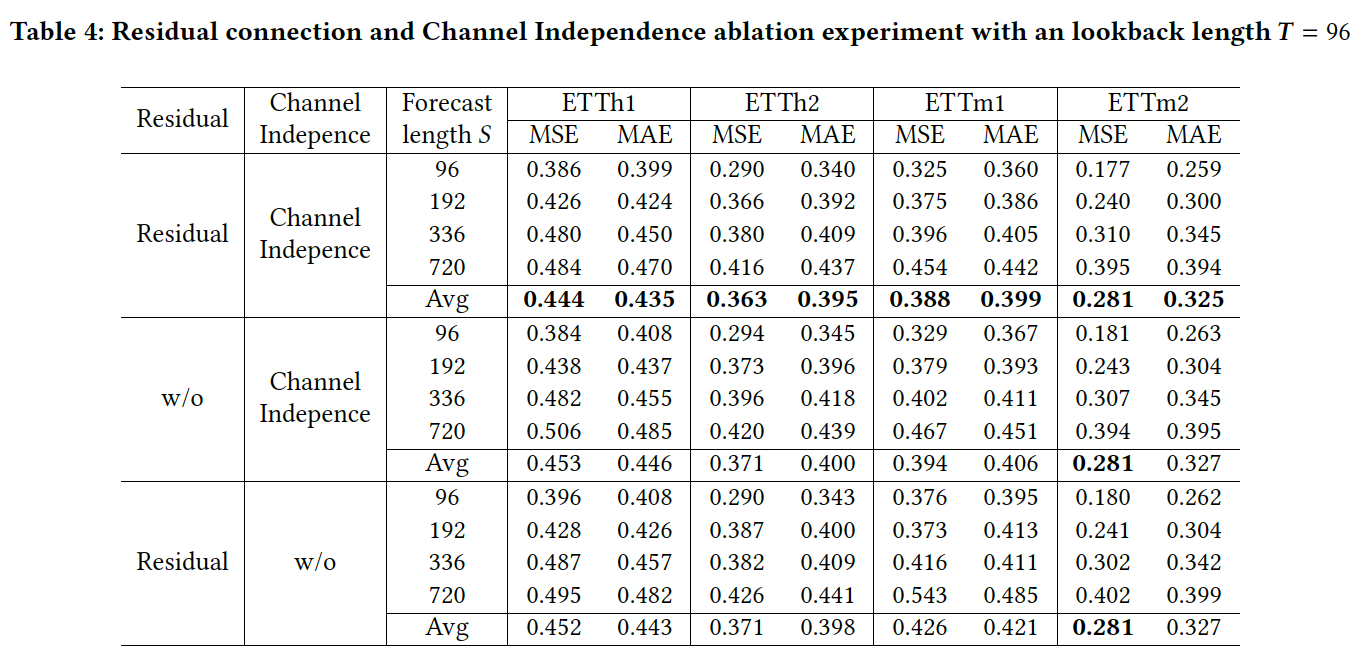DTMamba : Dual Twin Mamba for Time Series Forecasting
Contents
- Introduction
- Proposed Method
- Problem Statement
- Normalization
- CI & Reverse CI
- Twin Mamba
- Experiments
1. Introduction
DTMamba (Dual Twin Mamba)
[Procedure]
- RevIN
- CI layer
- TMamba blocks (\(\times 2\))
- Projection layer
- revese CI
- CI layer
- reverse RevIN
2. Proposed Method

Three layers
- (1) CI layer
- (2) TMamba block
- embedding
- FC layer
- dropout
- pair of twin Mambas
- (3) Projection layer
(1) Problem Statement
Multivariate TS
\(X=\left\{x_1, \ldots, x_L\right\}\).
- \(X_i \in \mathbb{R}^N\) consists of \(N\) dimensions \(\left\{x_i^1, \ldots, x_i^N\right\}\)
TS forecasting
- \(X=\left\{x_1, \ldots, x_T\right\} \in\) \(\mathbb{R}^{T \times N}\),
- \(\hat{X}=\left\{\hat{x}_{T+1}, \ldots, \hat{x}_{T+S}\right\} \in \mathbb{R}^{S \times N}\) ,
(2) Normalization
\(X^0=\left\{x_1^0, \ldots, x_T^0\right\} \in \mathbb{R}^{T \times N}\), via \(X^0=\operatorname{RevIN}(X)\).
(3) CI & Reverse CI
(B,T,N) \(\rightarrow\) (BxN, 1, T)
(4) Twin Mamba

a) Embedding Layes
Embed the \(X^I\) into \(X^E:(B \times\) \(N, 1, n i)\).
DTMamba
- consists of two TMamba Block in total
Embedding layer
- Embed the TS into \(\mathrm{n} 1\) and \(\mathrm{n} 2\) dimension
- Embedding 1 & Embedding 2
b) Residual
- To prevent overfitting
- FC layer to change the dimension of the residual
c) Dropout
\(X^E\) \(\rightarrow\) \(X^D:(B \times N, 1, n i)\).
d) MAMBAs
TMamba Block = Two parallel Mamba.
-
Multi-level feature learning can be achieved.
- Mamba (1)
- learn low-level temporal features
- Mamba (2)
- learn high-level temporal patterns
e) Projection Layer
\(R^1\) and \(R^2\)
- Representation learned by the two pairs of TMamba Block
Step 1) Addition operation
- \(X^A:(B \times N, 1, n 2) \leftarrow X^I+R^1+R^2\).
Step 2) Prediction ( next length \(S\) )
- Use a linear layer
- Get \(X^P:(B \times N, 1, S)\),
Step 3) Reverse CI ( = reshape )
- \(\hat{X}:(B, S, N)\).
3. Experiments



